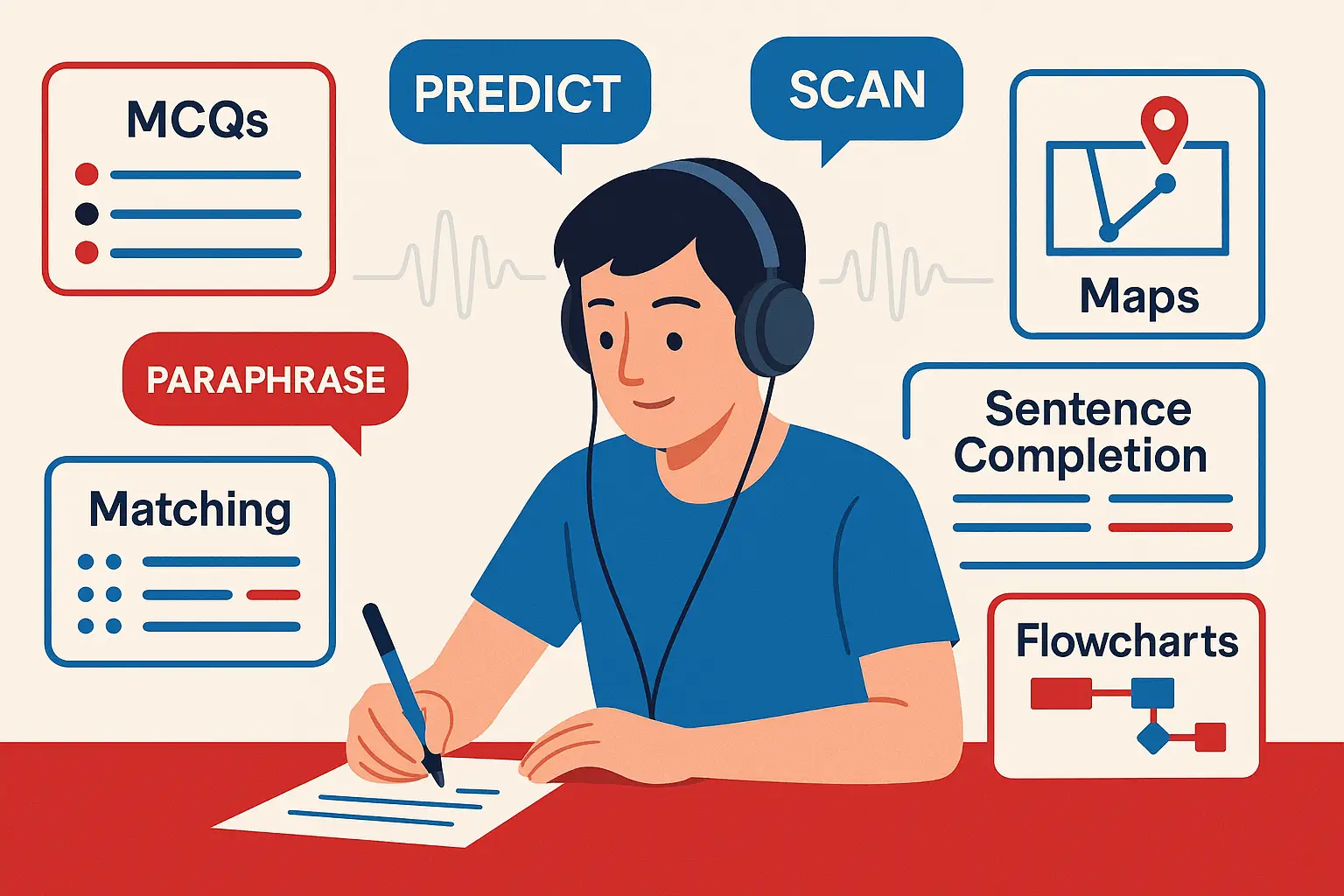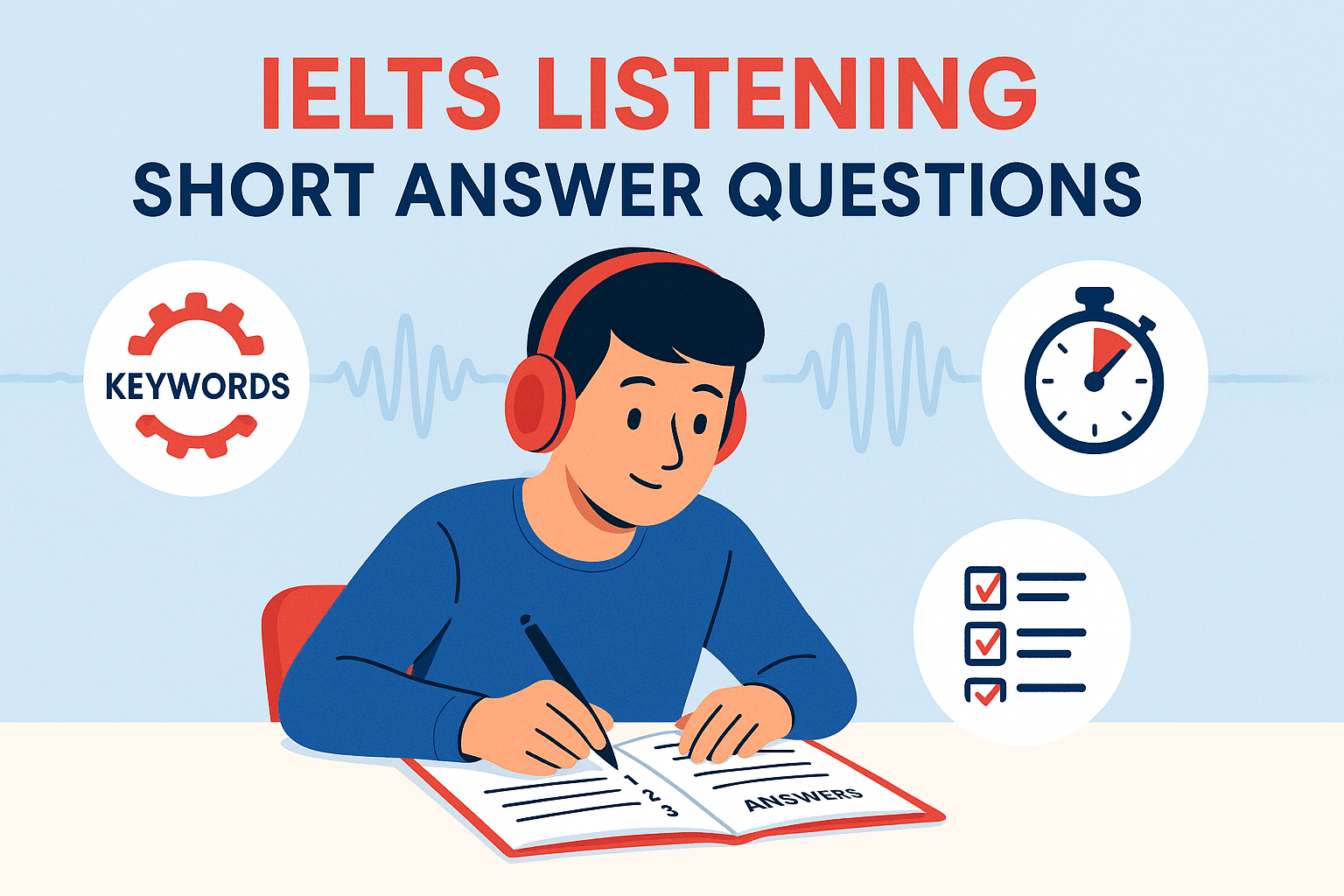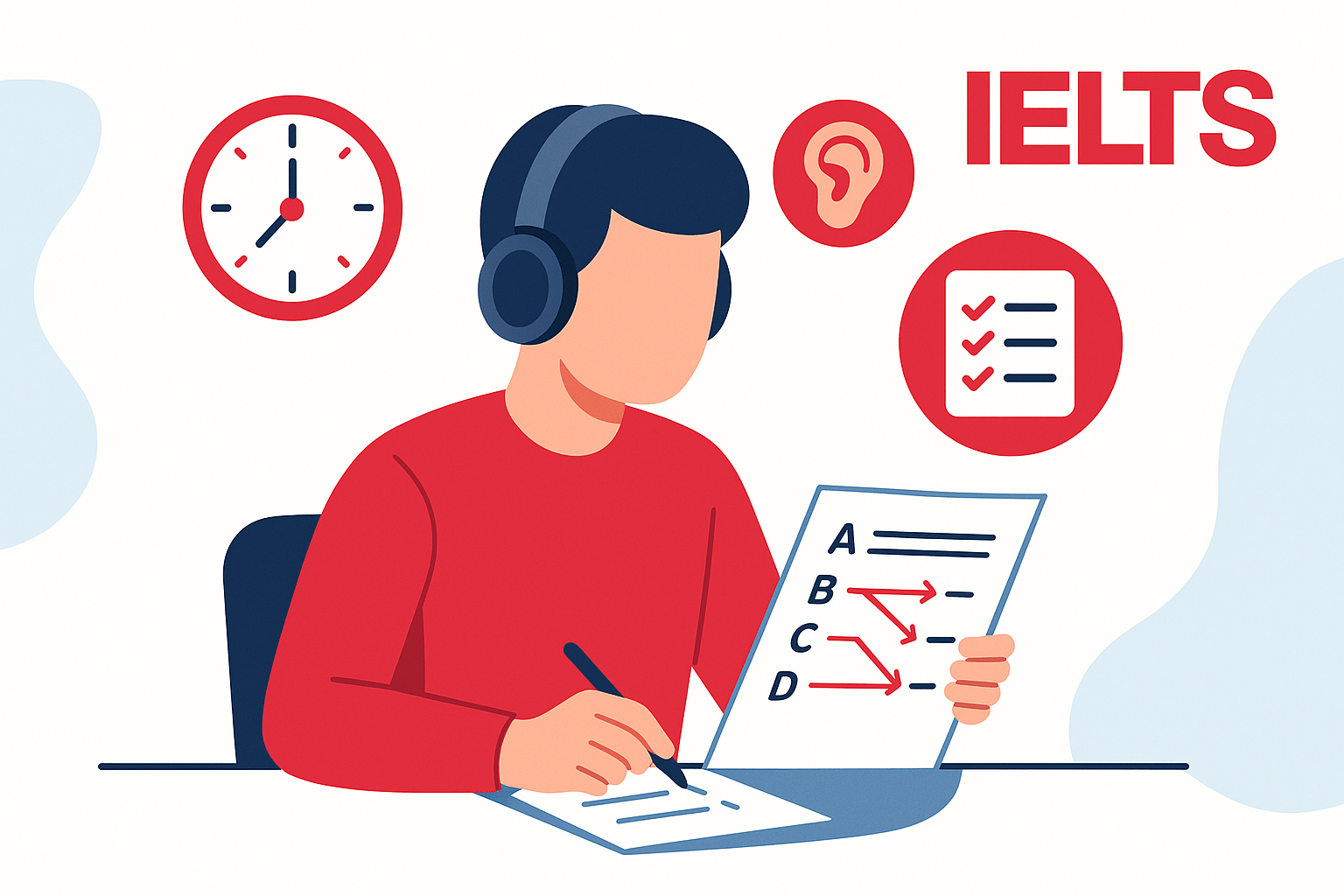- Why Question Types Matter in IELTS Listening
- Overview of IELTS Listening Question Types
- Multiple Choice Questions (MCQs)
- Sentence Completion
- Form, Note & Table Completion
- Map & Diagram Labelling
- Matching Type Questions
- Short Answer Questions
- How to Practise Each Question Type
- Real Student Story: From Band 6.5 to 8 in Listening
- FAQs About IELTS Listening Question Types
- Final Thoughts
If you’re aiming for Band 7, 8 or even 9 in the IELTS Listening test, you must understand the different IELTS Listening question types inside out. As an international IELTS teacher who’s worked with learners from over 30 countries, I’ve seen one consistent truth — most students lose marks not because of their listening ability, but because they don’t know how to approach the question types strategically.
In this guide, I’ll walk you through every IELTS Listening question type, share the real mistakes my students make, and explain the exact strategies I’ve taught them to fix those issues. You’ll also find links to deeper resources for each type, plus practice tools to help you get results faster.
Why Question Types Matter in IELTS Listening
One of my students from Turkey – a fluent English speaker – kept scoring 6.5 repeatedly. Why? He kept getting confused by matching questions and missing out on map directions. Once we broke down each IELTS Listening question type, practiced specific techniques, and aligned his listening approach to the format, he hit Band 8. This happens all the time.
The IELTS Listening test isn’t just about hearing words — it’s about interpreting, predicting, and extracting information efficiently. That’s why understanding question types is critical for success.
👉 If you haven’t already explored how scoring works, check my IELTS Listening Band 7–9 Guide before diving deeper.
Overview of IELTS Listening Question Types
The IELTS Listening test includes 6–8 different types of questions, and each tests a slightly different skill. Here are the main ones we’ll cover:
- Multiple Choice Questions (MCQs)
- Sentence Completion
- Form, Note & Table Completion
- Map & Diagram Labelling
- Matching
- Short Answer Questions
Each of these formats can appear in any of the four sections of the test, although some tend to appear more often in certain sections. I’ll also link to individual in-depth guides to help you master each one.
Multiple Choice Questions (MCQs)
This is one of the most misunderstood types. MCQs test your ability to listen for main ideas, specific information, and distractors. I’ve had students choose the wrong answer just because they heard the exact words — but in the wrong context.
✅ To avoid this trap, focus on understanding paraphrases and speaker intention. I go deeper into this in my IELTS Listening MCQ Guide, including step-by-step strategies for both one-answer and multiple-answer formats.
Sentence Completion
Sentence completion questions test both your vocabulary and grammar awareness. You’ll need to fill in the blanks with words from the audio — but the grammar must match and the spelling must be perfect.
One of my Brazilian students kept scoring Band 6. She was writing “a appointment” instead of “an appointment.” A small error, but it cost her every time.
🎯 I’ve compiled the most common errors and solutions in this Sentence Completion Tips guide — including how to predict word types before the audio even starts.
Form, Note & Table Completion
These formats are all about structured data and scanning for keywords. Whether it’s a table of prices or a form with a name and phone number, you’ll be listening for short factual details.
A trick I teach all my students: underline units and headings before you listen. This way, you know if you’re listening for a price, name, or date.
🧠 I explain this technique further in this Form/Note/Table Completion post — with practice drills and answer templates included.
Map & Diagram Labelling
This type terrifies many learners — especially those who panic under time pressure. But it doesn’t have to. If you can follow directions, understand spatial language, and recognize signpost words like “next to” or “opposite,” you’ll be fine.
One of my students from Vietnam went from getting 2/6 correct to full marks by learning how to track the speaker’s movement on the map.
🗺️ I share that technique in this Map & Diagram Labelling guide, where you’ll also find map vocabulary and sample practice.
Matching Type Questions
Matching requires strong paraphrasing and inference skills. You’ll hear several short speeches or comments, and you’ll need to match each speaker with the right opinion, activity, or statement.
What trips students up most is when two answers sound almost right. That’s when your paraphrasing detection needs to kick in.
🧩 One of my students overcame this using a comparison chart we created — which I now include in this Matching Questions Guide for you to use.
Short Answer Questions
Short Answer Questions are straightforward, but tricky in execution. You must:
- Stick to the word limit exactly
- Spell every word correctly
- Write what’s being asked — not what you assume
Many of my students lose points just because they wrote “five people” instead of “5” when the instruction said “NO MORE THAN ONE WORD AND/OR A NUMBER.”
✏️ To practice this accurately, check out this Short Answer Questions Guide with example answers and marking tips.
How to Practise Each Question Type
I always recommend targeted practice, not random test-taking. Focus on one type at a time, review your mistakes, and only then move to full tests.
🎧 I’ve designed free IELTS Listening practice tests to help you build question-type mastery while tracking your progress.
Real Student Story: From Band 6.5 to 8 in Listening
Fatima, one of my students from Pakistan, was stuck at Band 6.5. She was confident in her English but struggled with strategy — especially in map labelling and matching.
Here’s what we did:
- Identified her weakest question types
- Used the guides above for focused practice
- Practised under timed conditions
- Reviewed answers and created error logs
After four weeks, she took the test again — and scored Band 8.0 in Listening.
FAQs About IELTS Listening Question Types
❓ Do all question types appear in every test?
Not all types appear every time, but you’ll usually get 6 to 8 types across the four sections. It’s important to master all of them.
❓ What’s the hardest question type in IELTS Listening?
This varies by student, but many find map labelling and matching the most challenging due to the mental processing involved.
❓ Should I answer while listening or wait till the end?
You MUST answer as you listen. The audio plays only once, and waiting can lead to missed information.
❓ Where can I find official information?
Always refer to the official test providers for the most up-to-date info:
Final Thoughts
Understanding IELTS Listening question types isn’t just about test tricks — it’s about training your brain to interpret spoken English the way the test expects.
I’ve seen hundreds of students transform their scores simply by learning how to listen, what to listen for, and how to approach each question type with confidence.
If you’re serious about your IELTS Listening improvement, start by identifying your weakest question type and practising with the resources I’ve linked above.
And if you’re looking for structured training, explore IELTS-recognised premium courses that cover all four skills with feedback.
You’ve got this — let’s aim for that Band 9 together.





4 Responses